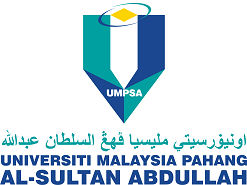Computational performance of a-100 kW low pressure turbine to recover gas turbine exhaust energy
DOI:
https://doi.org/10.15282/jmes.13.2.2019.02.0399Keywords:
Low pressure turbine, electric-turbocompounding, exhaust energy recovery, turbine scalingAbstract
Low Pressure Turbine (LPT) was designed to recover exhaust energy from Internal Combustion (IC) engine. The LPT is located downstream retrieved exhaust heat energy from combustion after flowing through the high pressure turbine (HPT). The work output obtained from the exhaust energy is used to drive an electric generator with power output of 1.0kW. These was not done by commercial turbine as the low efficiency resulted when operated. The main purpose of this project is to develop a scaling model for LPT with power output up to 100kW. An existing LPT that was designed with output of 1.0 kW used as guideline to upscale the turbine. Scaling factor was obtained by comparing the baseline with power output. The turbine performance was analysed by using a commercial Computational Fluid Dynamic (CFD) ANSYS CFX. The study found that the scaling factor f, of 10 can be used to produce a 100kW at passage. Thus, the geometrical parameter will be scaled accordingly. The rotational speed is reduced from 50,000 rpm to 5,000 rpm. The CFD analysis found that 81% of total-static efficiency, ht-s at velocity ratio VR, of 0.68 and the Pressure Ratio PR, of 1.12 producing power of 119.88 kW which nearest with the design point which is at 100 kW. Despite the LPT swallowing capacity is increased by 50 times, the LPT is still limited by the operational choking Pressure Ratio, PR limitation which is 1.4.
References
International Energy Agency. World energy outlook 2018. Retrieved from https://webstore.iea.org/download/summary/190?fileName=English-WEO-2018-ES.pdf; 13 November, 2018.
Chiara F, Canova M. A review of energy consumption, management, and recovery in automotive systems, with considerations of future trends. Proceedings of the Institution of Mechanical Engineers, Part D: Journal of Automobile Engineering 2013;227:914-936.
Sasongko MN, Wijayanti W. Effect of ethanol addition on the performance and exhaust emissions of a spark ignition engine. Journal of Mechanical Engineering and Sciences 2017;11:2734-2742.
Boretti A, Al-Zubaidy S. E-KERS Energy management crucial to improved fuel economy. SAE Technical Papers: 016-01-1947; 2016 .
Fennell D, Herreros J, Tsolakis A. Improving gasoline direct injection (GDI) engine efficiency and emissions with hydrogen from exhaust gas fuel reforming. International Journal of Hydrogen Energy 2014;39:5153-5162.
Matulić N, Radica G, Nižetić S. Thermodynamic analysis of active modular internal combustion engine concept: Targeting efficiency increase and carbon dioxide emissions reduction of gasoline engines. International Journal of Energy Research 2018;42:3017-3029.
Treffinger P, Häfele C, Weiler T, Eder A, Richter R, Mazar B. Energy recovery by conversion of waste heat into useful energy. VDI Berichte, 2008: 385-405.
Armstead JR, Miers SA. Review of waste heat recovery mechanisms for internal combustion engines. American Society of Mechanical Engineers, Internal Combustion Engine Division (Publication) 2010; 965-974.
Pavlas M, Touš M. Efficient waste-to-energy system as a contribution to clean technologies. Clean Technologies and Environmental Policy 2009;11:19-29.
Bin Mamat AMI, Martinez-Botas RF, Rajoo S, Hao L, Romagnoli A. Design methodology of a low pressure turbine for waste heat recovery via electric turbocompounding. Applied Thermal Engineering 2016;107:1166-1182.
Bin Mamat AMI, Martinez-Botas RF, Rajoo S, Romagnoli A, Petrovic S. Waste heat recovery using a novel high performance low pressure turbine for electric turbocompounding in downsized gasoline engines: Experimental and computational analysis. Energy 2015;90:218-234.
Nawi MRM, Mamat AMI, Ismail H. Numerical heat transfer analysis of waste heat exchanger for exhaust gas energy recovery. Journal of Mechanical Engineering and Sciences 2015;8:1498-1506.
Ababneh M, Al-Jarrah AA, Sha’ban H, BaniHani S, Al-Jarrah AM, AlMomani T, et al. Recovering waste heat from automobile engine using thermoelectric power generators. International Review of Mechanical Engineering 2017;11:845-854.
Aghaali H, Ångström HE. A review of turbocompounding as a waste heat recovery system for internal combustion engines. Renewable and Sustainable Energy Reviews 2015;49:813-824.
Alshammari F, Karvountzis-Kontakiotis A, Pesyridis A, Usman M. Expander technologies for automotive engine organic rankine cycle applications. Energies 2018;11:1-36.
Fu G, Zuo L, Longtin JP. Review of waste energy resource in vehicle engine exhaust. In: ASME 2012 Heat Transfer Summer Conf Collocated with the ASME 2012 Fluids Engineering Div Summer Meeting and the ASME 2012 10th Int Conf on Nanochannels, Microchannels and Minichannels, Puerto Rico, USA, 8–12 July, 2012.
Andwari AM, Pesiridis A, Esfahanian V, Salavati-Zadeh A, Karvountzis-Kontakiotis A, Muralidharan V. A comparative study of the effect of turbocompounding and ORC Waste Heat Recovery systems on the performance of a turbocharged heavy-duty diesel engine. Energies. 2017;10:1-17.
Sakellaridis NF, Antonopoulos AK, Pariotis EG, Hountalas DT. Model-based theoretical optimization study of a turbo-compound system installed on a large scale marine diesel engine. Turbochargers and Turbocharging: Advancements, Applications and Research, 2017: 55-90.
Walsh P, Gas turbine performance. 2nd ed. U.S.A.: Blackwell Science; 2004.
Hountalas DT, Knecht W, Zannis TC. Exhaust heat recuperation from dl diesel engines using mechanical and electrical turbocompounding. In: The 23rd International Conference on Efficiency, Cost, Optimization, Simulation, and Environmental Impact of Energy Systems, Lausanne, Switzerland, pp. 53-61; 2010.
Bin Mamat AMI, Romagnoli A, Martinez-Botas RF. Characterization of a low pressure turbine for turbocompounding applications in a mild-hybrid gasoline engine. In : 10th International Conference on Turbochargers and Turbocharging, London, United Kingdom, pp. 281-93; 2010.
Briggs I, McCullough G, Spence S, Douglas R. Whole-vehicle modelling of exhaust energy recovery on a diesel-electric hybrid bus. Energy. 2014;65:172-81.
Mingshan W, Jinli F, Chaochen M, Noman DS. Waste heat recovery from heavy-duty diesel engine exhaust gases by medium temperature ORC system. Science China Technological Sciences. 2011;54:2746-2753.
Briggs I, McCullough G, Spence S, Douglas R, O'Shaughnessy R, Hanna A. Waste heat recovery on a diesel-electric hybrid bus using a turbogenerator. SAE Technical Papers: 2012-01-1945; 2012.
Teo AE, Yahya WJ, Romagnoli A, Rajoo S, Noor AM. Effectiveness of series and parallel turbo compounding on turbocharged diesel engine. Journal of Mechanical Engineering and Sciences 2015;8:1448-1459.
He G, Xie H, Gu Z. Investigation into Comprehensive Fuel Saving Potential of Diesel with Electric Turbo-compounding Waste Heat Recovery Power Generation and Electric Thermal Management Power Consumption Systems. Hsi-An Chiao Tung Ta Hsueh/Journal of Xi'an Jiaotong University 2017;51:112-120.
Deshmukh DS, Modak JP, Nayak KM. Experimental analysis of backpressure phenomenon consideration for C.I. engine performance improvement. SAE Technical Papers: 2010-01-1575, 2010.
Terdich N, Martinez-Botas RF, Romagnoli A, Pesiridis A. Mild hybridization via electrification of the air system: electrically assisted and variable geometry turbocharging impact on an off-road diesel engine. Journal of Engineering for Gas Turbines and Power. 2014;136(3):1-12.
Romagnoli A, Manivannan A, Rajoo S, Chiong MS, Feneley A, Pesiridis A. A review of heat transfer in turbochargers. Renewable and Sustainable Energy Reviews 2017;79:1442-1460.
Zhao R, Li W, Zhuge W, Zhang Y, Yin Y. Numerical study on steam injection in a turbocompound diesel engine for waste heat recovery. Applied Energy 2017;185:506-518.
Kant M, Romagnoli A, Mamat AM, Martinez-Botas RF. Heavy-duty engine electric turbocompounding. Proceedings of the Institution of Mechanical Engineers, Part D: Journal of Automobile Engineering 2015;229:457-472.
Ahmad B, Fattah A, Bin Mamat AMI. Single passage CFD analysis for non radial fibre element of low pressure turbine. Jurnal Teknologi 2015;76:67-72.
Liang X, Wang X, Shu G, Wei H, Tian H, Wang X. A review and selection of engine waste heat recovery technologies using analytic hierarchy process and grey relational analysis. International Journal of Energy Research 2015;39:453-471.
Roque Díaz P, Benito YR, Parise JAR. Thermoeconomic assessment of a multi-engine, multi-heat-pump CCHP (combined cooling, heating and power generation) system - A case study. Energy 2010;35:3540-3550.
Japikse D, Baines NC. Introduction to turbomachinery. 1st Ed. Vermont, USA: Oxford University Press; 1994.
Downloads
Published
Issue
Section
License
Copyright (c) 2019 The Author(s)

This work is licensed under a Creative Commons Attribution-NonCommercial 4.0 International License.






